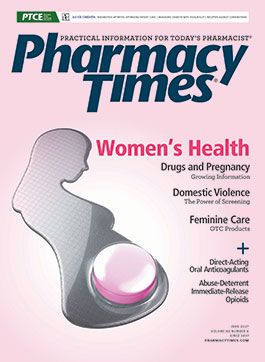Publication
Article
Pharmacy Times
Medication Therapy Management and Health Care Reform
The changes that the Affordable Care Act has brought to the practice of pharmacy may not be well known.
The changes that the Affordable Care Act (ACA) has brought to the practice of pharmacy may not be well known. One change has been the implementation of payment for medication therapy management (MTM), a method of care delivery that has expanded the role of pharmacists to allow them to be more involved in patient management and adherence.
The ACA introduced a legislative framework for MTM to be conducted in community pharmacy settings as a collaborative, multidisciplinary, and interprofessional approach to treating chronic diseases in targeted patients. MTM helps pharmacists address quality of care, reduces the overall cost of treating patients with chronic diseases, and is needed to prevent medication-related issues, which are a major public health problem. Pharmacists can ensure that patients are receiving the correct medications for their diagnosed health conditions and, in turn, improve patient outcomes.
Anyone who takes any type of medication—over the counter or prescription—can benefit from MTM. The patients who benefit the most are on multiple medications that require monitoring, were recently hospitalized and discharged with new medications, and receive medications from multiple prescribers or pharmacies. With MTM, all patients receive full counseling on their medications, and some patients may be able to reduce the number or doses of their medications if the pharmacist identifies dual therapy or a medication error.
The ACA allows pharmacists to bill outside medication counseling companies for MTM that was already being provided to patients. These companies communicate with patients’ insurance companies to see if they are adhering to their medications and being treated properly for diagnosed conditions. Once this information is noted, the pharmacy is notified that one of its patients is eligible for MTM. The pharmacist then sets up a time to work with the patient and can provide MTM over the phone or in person.
For Medicare plans, a rating is issued to each beneficiary, per the ACA, and it feeds into a STAR rating for the plan. This reflects whether patients are adhering to their blood pressure, cholesterol, and diabetes medications or if patients with diabetes are on statin medications. If patients do not appear to be adherent, the medication counseling companies flag pharmacies to let pharmacists know they may have patients in need of MTM. Pharmacists find this system effective in helping them to reach out to patients to establish a better relationship to maintain and improve their health. The pharmacies also receive a STAR rating based on their performance in providing MTM.
The ACA was designed to introduce innovations to the legislative framework for the health care industry. A main benefit for pharmacy was the introduction of coverage for the MTM services pharmacists provide, a move that allowed pharmacists to be recognized clinically for counseling and reviewing medication histories with patients. With the proposal of HR 1628, the American Health Care Act of 2017, coverage for services, such as MTM, is uncertain. The new bill does not mention the involvement of pharmacists or monitoring patients’ use of medications.
Pharmacists and the organizations that represent their interests should continue to monitor and assess various legislative proposals for health care reform to ensure incorporation of pharmacists’ contributions toward improving patient care.
Courtney C. Rerecich is a second-year PharmD student at the University of Kentucky College of Pharmacy.Joseph L. Fink III, BSPharm, JD, DSc (Hon), FAPhA, is professor of pharmacy law and policy and the Kentucky Pharmacists Association Endowed Professor of Leadership at the University of Kentucky College of Pharmacy, Lexington.







